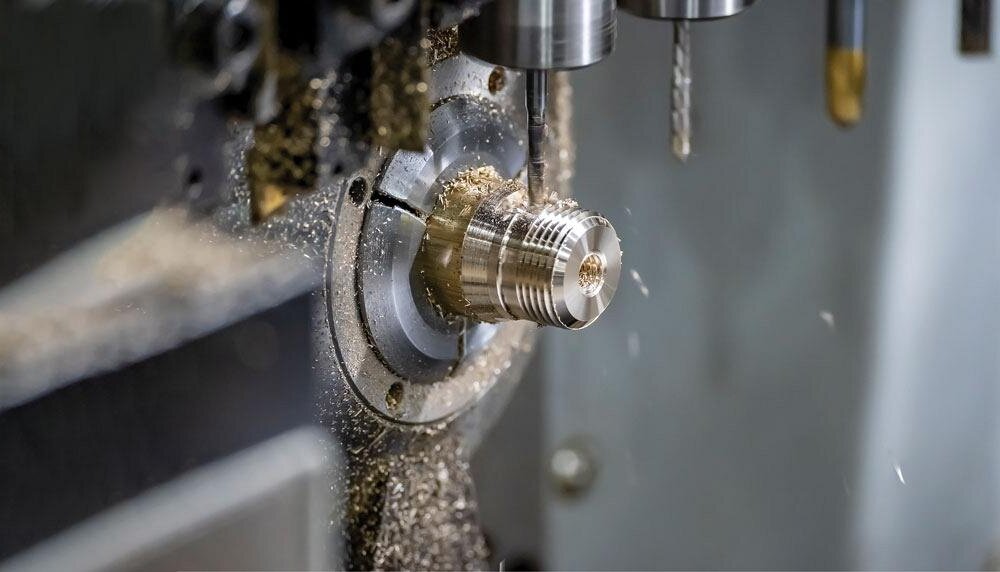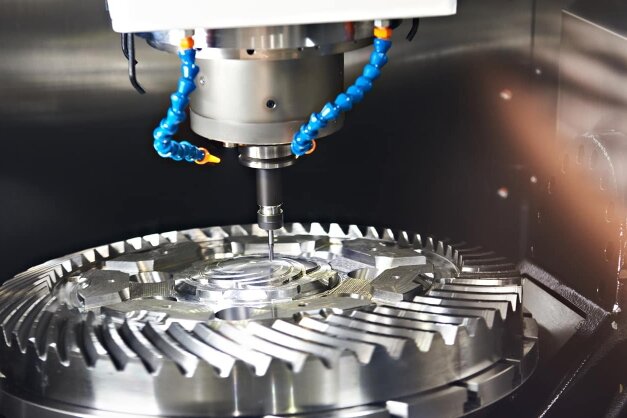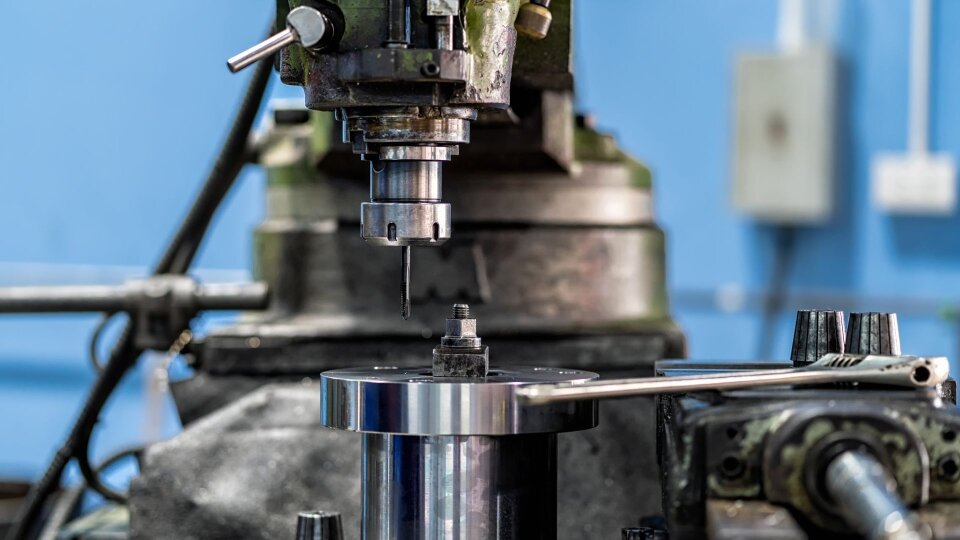Many manufacturers struggle to pick the right CNC machine for their projects. With dozens of options, choosing the wrong one can waste time and money. This guide breaks down the 12 key CNC machines that can handle most manufacturing needs and help you make products faster and better.
Want to know which CNC machine is best for your next project? Let’s examine each type’s capabilities, uses, and advantages.
What is a CNC Machine?
A CNC machine is a type of machine that uses computer programs to control its actions. These machines can perform tasks such as cutting, drilling, milling, and shaping materials. The computer software tells the machine exactly how to move and what to do.
CNC machines are commonly used in manufacturing to create parts for various industries. They offer high accuracy and consistency, which makes them valuable in modern production. These machines can work with many types of materials and reduce the need for manual labor, making production faster and more efficient.
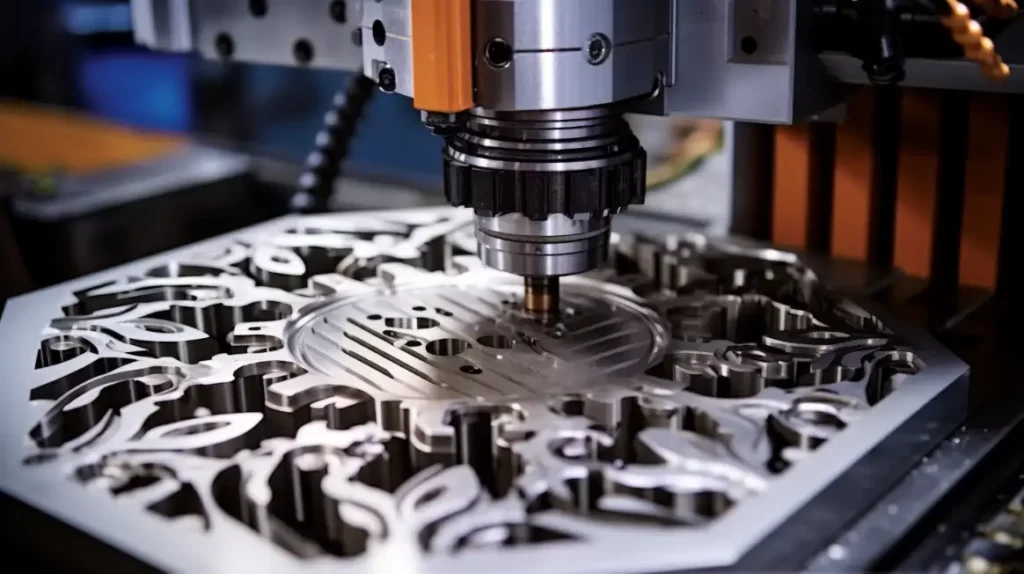
Essential Elements of a CNC Machine System
A CNC machine system comprises several key components that perform tasks accurately and efficiently. Here are the main elements:
Controller
The controller is the brain of the CNC machine. It reads the programmed instructions (G-code) and sends signals to the machine’s motors to move the tools and workpiece.
Machine Tool
This is the physical part of the CNC system that performs the cutting, drilling, or shaping. Examples include mills, lathes, and routers.
Drive System
The drive system includes motors and gears that move the machine’s parts. It ensures precise movement along the X, Y, and Z axes.
Feedback System
Sensors and encoders in the feedback system monitor the machine’s position and speed. They send data back to the controller to ensure accuracy.
Workpiece
The workpiece is the material being cut or shaped. During the machining process, clamps or fixtures hold it in place.
Cutting Tools
These are the tools that physically remove material from the workpiece. They vary depending on the machine and the task, such as drills, end mills, or lathe tools.
Software
CNC software creates and edits the instructions (G-code) that control the machine. It translates designs into commands the machine can follow.
Operator Interface
This is the control panel or computer where the operator inputs commands, monitors the machine,, and adjusts.
#1 CNC Milling Machines
CNC milling machines are subtractive manufacturing equipment that uses rotating cutters to remove material from a workpiece. These machines are designed to create precise and complex parts by moving the material in different directions.
There are various types of CNC milling machines, including vertical, horizontal, and 3- to 5-axis.
Advantages
- High precision and repeatability
- Capable of producing complex shapes and designs
- Ideal for both prototyping and mass production
- Can work with a wide range of materials, including metals and plastics
Disadvantages
- The high initial cost for purchasing and setup
- Requires skilled operators for programming and maintenance
- Regular maintenance is needed to keep the machine in optimal condition
- Material waste can occur as the material is removed from the workpiece
- The machine’s table limits the size of the workpiece
Costs
Entry-level models start around $10,000, while more advanced machines can cost between $50,000 and $100,000 or more.
#2 CNC Lathes and Turning Machines
CNC lathes and turning machines shape material by rotating the workpiece against a cutting tool. These machines are designed to produce cylindrical or conical parts, such as shafts, bolts, and rings, by removing material through a turning process.
There are several types of CNC lathes, including 2-axis, 3-axis, and multi-axis lathes.
Advantages
- High precision for cylindrical and conical parts
- Can produce smooth finishes and tight tolerances
- Versatile and capable of performing multiple operations like drilling and threading
Disadvantages
- Limited to producing cylindrical or conical shapes, it is less versatile than milling machines
- Requires skilled operators to program and maintain the machine
- Regular maintenance is necessary to keep the machine running smoothly
- Material waste can occur as the machine removes material
Costs
Basic models can start at around $15,000, while more advanced machines with multiple axes or additional capabilities can range from $50,000 to over $100,000.
#3 CNC Turning Milling Compound Machines
CNC turning milling compound machines combine the functions of CNC lathes and CNC milling machines. They are designed to perform both turning and milling operations on a single setup, allowing for more complex parts to be created without the need to move the workpiece between different machines.
Different types of CNC turning milling compound machines exist, including horizontal and vertical configurations.
Advantages
- Combining turning and milling in one machine reduces the need for multiple setups and handling.
- Capable of producing parts with tight tolerances and smooth finishes.
- Suitable for a wide range of parts, including complex geometries that require both turning and milling.
- Reduces the need for multiple machines, saving both space and capital investment.
Disadvantages
- These machines can be expensive due to their combined capabilities.
- Requires skilled operators who are familiar with both turning and milling processes.
- The size of the part is limited by the machine’s table and spindle capacity.
Costs
Entry-level models can start at around $30,000, while more advanced machines with additional features and higher precision can range from $70,000 to $200,000 or more.
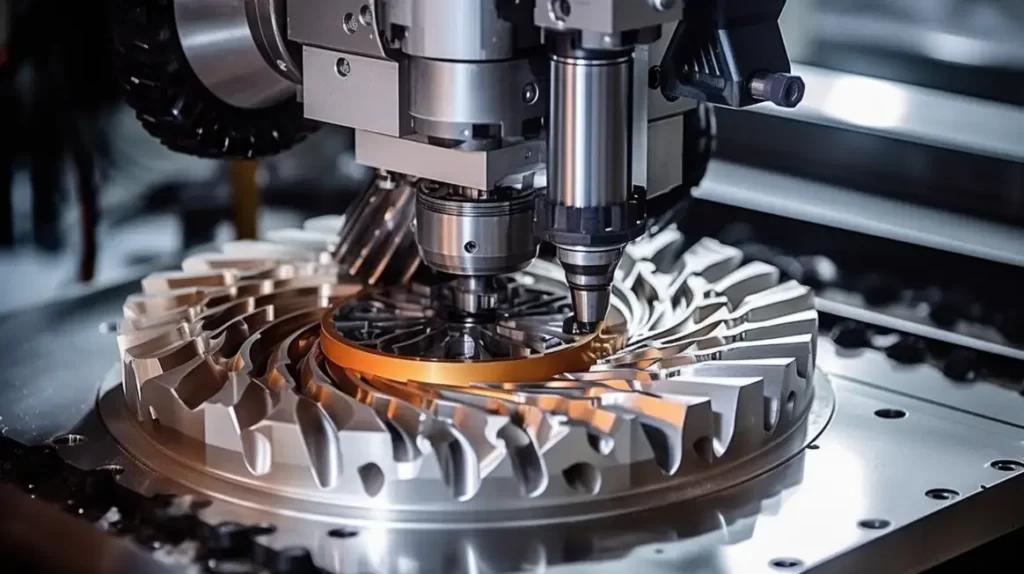
#4 CNC Router
CNC routers are a CNC machine that uses a rotating cutting tool to carve or shape materials like wood, plastic, and light metals. CNC routers can move along multiple axes, performing complex operations with minimal human intervention.
There are various types of CNC routers, including 3-axis and 4-axis machines, with some advanced models offering 5-axis capabilities.
Advantages
- It can be used to cut and shape various materials, including wood, plastic, and soft metals.
- It offers high accuracy and repeatability, making it ideal for detailed cuts and intricate designs.
- Automation reduces the need for manual labor and speeds up production time.
- CNC routers are often more affordable than milling machines for larger workpieces like panels or boards.
Disadvantages
- The same accuracy cannot be achieved for very small or complex parts.
- Regular maintenance is required to keep the machine in good working condition.
- The cutting depth may be limited depending on the size and configuration of the router.
Costs
Entry-level models typically start around $5,000, while more advanced models with larger worktables and more excellent capabilities can cost between $20,000 and $80,000 or more.
#5 CNC Plasma Cutters
CNC plasma cutters use a plasma torch to cut through electrically conductive materials like steel, aluminum, brass, and copper. The cutting process is fast and efficient, using a high-temperature plasma arc to melt and blow away the material.
CNC plasma cutters, including 2D and 3D models, come in different configurations to accommodate various cutting needs.
Advantages
- Plasma cutting is one of the quickest metal-cutting methods, especially for thicker materials.
- Offers clean, accurate cuts, particularly for straight lines and simple shapes.
- Suitable for cutting a wide range of metals, including ferrous and non-ferrous materials.
- Plasma cutting is more affordable for cutting thick metals than laser cutting methods.
Disadvantages
- Plasma cutters are only effective on conductive materials like metals, so they can’t be used for cutting non-metals like plastics or wood.
- Plasma cuts may have a rougher edge compared to other cutting methods like laser or water jet cutting.
- The heat from the plasma arc can affect the surrounding material, leading to warping or surface damage.
Costs
Entry-level models for smaller shops may start around $5,000, while larger, more advanced systems with additional features can cost anywhere from $20,000 to $60,000.
#6 CNC Laser Cutting Machines
CNC laser cutting machines use a focused laser beam to cut or engrave materials with high precision. The laser beam melts, burns, or vaporizes the material, leaving a clean and smooth edge.
There are different types of CNC laser cutting machines, including CO2, fiber, and crystal lasers.
Advantages
- Laser cutting provides highly accurate cuts with minimal material distortion, which is ideal for intricate designs.
- It can cut through a wide range of materials, including metals, plastics, wood, and more.
- The laser cutting process is highly efficient, with minimal material waste generated.
- As a non-contact process, laser cutting does not physically touch the material, reducing wear and tear on the machine and the workpiece.
Disadvantages
- CNC laser cutting machines, especially high-powered models, can be expensive.
- While suitable for thin to medium-thickness materials, laser cutting may not be effective for very thick materials, depending on the laser type.
- The laser’s heat can cause a slight change in the material properties near the cut edge, which may affect the material’s strength.
Costs
Entry-level models can start at around $20,000, while more advanced systems can range from $50,000 to over $200,000.
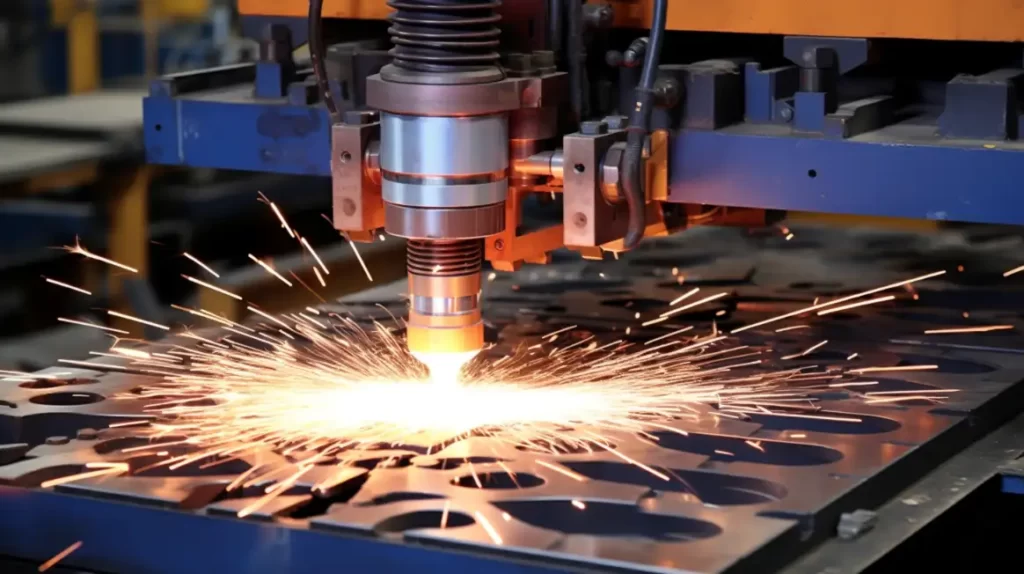
#7 CNC Electrical Discharge Machines
EDM uses electrical discharges or sparks to remove material from a workpiece. This process is beneficial for hard metals or materials that are difficult to machine with traditional methods.
There are two main types of EDM machines: wire EDM and sinker EDM.
Advantages
- EDM machines offer exceptional accuracy, ideal for intricate designs and fine details.
- Since the process uses electrical discharges, the workpiece has no direct mechanical force, preventing deformation or distortion.
- EDM can produce complex and highly detailed shapes, including internal features.
Disadvantages
- EDM tends to be slower than other methods like milling or turning, which can impact production speed.
- EDM is typically more suitable for thinner materials, as it can be less efficient for thick workpieces.
- Proper setup and operation require experienced and skilled operators to ensure precision and efficiency.
Costs
Entry-level wire EDM machines start around $30,000, while advanced models with more features and greater precision can cost between $100,000 and $300,000.
#8 CNC Waterjet Cutting Machine
CNC waterjet cutting machines use a high-pressure jet of water, often mixed with abrasive materials, to cut through various materials. This process is highly effective for materials sensitive to heat because it does not involve high temperatures.
Waterjet machines come in two main types: pure waterjet and abrasive waterjet.
Advantages
- Since waterjet cutting doesn’t involve heat, it prevents thermal distortion or warping, making it ideal for sensitive materials.
- Waterjet cutting delivers smooth and accurate cuts with tight tolerances reaching up to 0.1mm.
- It can cut a wide range of materials, including metals, plastics, glass, ceramics, and even stone.
- The process doesn’t require physical contact with the material, so there is no tool wear.
Disadvantages
- Waterjet cutting is generally slower than other cutting methods, especially for thicker materials.
- The setup and purchase cost for waterjet cutting machines is relatively high, especially for industrial-grade models.
- Waterjet systems require regular maintenance to ensure the water pressure and abrasive feed mechanisms function correctly.
Costs
Entry-level machines typically start around $40,000, while larger, more advanced systems can range from $100,000 to $500,000 or more for high-end industrial models.
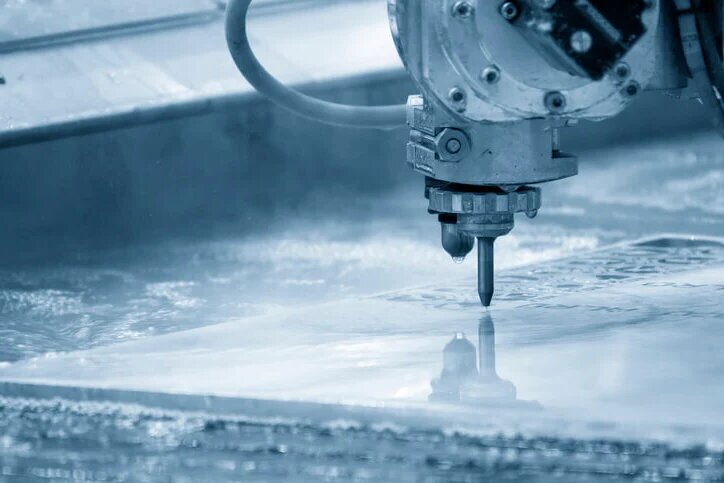
#9 CNC Grinding Machines
CNC grinding machines are designed to use abrasive wheels to remove material from a workpiece, achieving a smooth and precise finish.
Various types of CNC grinding machines include surface grinders, cylindrical grinders, and internal grinders.
Advantages
- CNC grinding machines provide excellent surface finish and dimensional accuracy, making them ideal for tight tolerances.
- Suitable for grinding various materials, including metals, ceramics, and composites.
- CNC grinding delivers superior surface finishes compared to other machining methods.
Disadvantages
- Grinding is generally slower than other cutting methods, like milling or turning, especially when working with hard materials.
- Grinding wheels wear down over time, requiring replacement and maintenance to maintain performance.
- CNC grinding is less effective for thicker materials, as the grinding process is slow and less efficient for heavy material removal.
Costs
Entry-level models can start around $20,000, while more advanced models, especially for high-precision industrial systems, can range from $50,000 to $150,000 or more.
#10 CNC Drilling Machines
CNC drilling machines are specialized equipment that use rotating drill bits to create precise holes in a workpiece. These machines are commonly used in manufacturing for drilling, boring, and reaming.
There are different types of CNC drilling machines, including vertical drilling machines, radial drilling machines, and multi-spindle drilling machines.
Advantages
- CNC drilling machines provide accurate hole placement and consistent sizes, ensuring high-quality results.
- It can be used for a wide range of materials, including metals, plastics, and composites.
- Capable of drilling multiple holes in a single pass, saving time in production.
Disadvantages
- These machines are mainly designed for drilling tasks and may not be suitable for other types of machining like cutting or shaping.
- Regular maintenance is necessary to ensure the machine remains in optimal working condition.
- The machine’s table size may restrict the workpiece size, limiting the type of parts that can be drilled.
Costs
Entry-level models typically cost around $15,000, while more advanced machines can range from $30,000 to $100,000.
#11 Multi-Axis Machines
Multi-axis machines are advanced CNC systems designed to perform complex machining tasks with high precision. Unlike traditional CNC machines, which typically operate on three axes, multi-axis machines can move the tool or the workpiece in more than three directions.
Common multi-axis machines include 4-axis, 5-axis, and even 6-axis CNC machines.
Advantages
- Multi-axis machines can achieve greater precision and reduce the need for multiple setups, making them ideal for complex, high-tolerance parts.
- With more movement options, these machines can process parts from various angles, allowing for complex geometries and detailed designs.
- Parts can be finished in fewer setups, reducing the time spent reloading and repositioning the workpiece.
Disadvantages
- Multi-axis CNC machines are significantly more expensive than traditional 3-axis machines.
- These machines require skilled operators proficient in advanced programming and machine setup.
- Operators need additional training to fully understand and operate multi-axis machines effectively.
Costs
Entry-level models for smaller operations may start around $50,000, while more advanced 5-axis machines can range from $150,000 to over $500,000.
#12 CNC 3D Printer
CNC 3D printers create parts and objects by layering material. Unlike traditional CNC machines, which remove material, 3D printers add material, typically plastic, metal, or resin, to build complex designs directly from a digital model.
Various types of 3D printers, including FDM, SLA, and SLS, each suited for different materials and production needs.
Advantages
- 3D printers can produce highly complex and customized parts without special tooling.
- 3D printing is ideal for quick prototyping, allowing designers to test and modify designs rapidly.
- Since the material is added layer by layer, there is little waste compared to subtractive manufacturing methods.
- 3D printing eliminates the need for expensive molds, dies, or tools, making it cost-effective for small runs and custom parts.
Disadvantages
- Parts typically require post-processing steps, such as support removal and surface finishing.
- For large-scale production, 3D printing can be slower than traditional manufacturing processes.
- Many 3D printers have size limitations based on the print bed, which can restrict the size of the parts produced.
Costs
Entry-level 3D printers start at around $1,000, while industrial-grade printers range from $10,000 to $100,000.
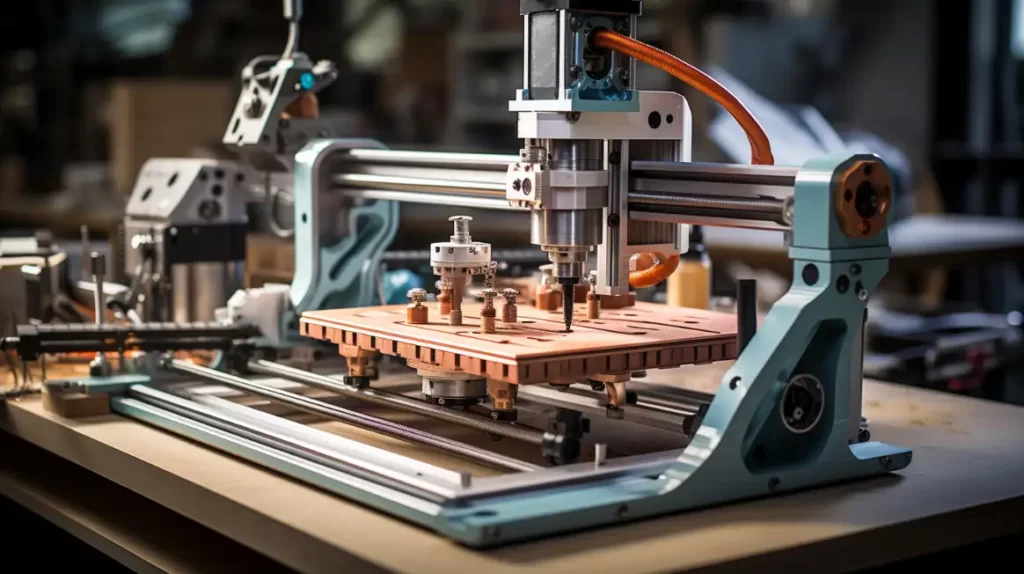
How to Select the Best CNC Machine Type?
Choosing the right CNC machine is key to getting good results, saving time, and staying within budget. Several factors should be considered when making your choice.
Identify Your Material Type
The material you’re working with is an essential factor. Different CNC machines work better with specific materials. For example, CNC milling machines are great for metals, while CNC routers are better for wood or soft plastics.
Determine the Part Complexity
How complex is the part you want to make? If you need intricate details or complex shapes, you’ll need a machine with more advanced capabilities. A 5-axis CNC machine or a CNC 3D printer could be a good choice for complex designs. For simpler parts, a CNC machine with fewer axes may be enough.
Consider Production Volume
Think about how many parts you need to make. If you have a large production run, you might want a faster machine like a CNC lathe or milling machine. Machines like CNC routers or 3D printers might be more affordable and effective for smaller batches or prototypes.
Precision Requirements
How precise do the parts need to be? If your project requires tight tolerances, you’ll need a high-precision machine. CNC grinding machines or CNC EDM machines are designed for high accuracy.
Part Size and Dimension
Another key factor is the size of the part. Different CNC machines have different work area sizes. If your part is large, you might need a CNC router or a bigger milling machine with a large table.
Budget
Your budget will also influence your decision. Machines with more features or advanced capabilities, like 5-axis milling, tend to be more expensive. If you’re working with a limited budget, entry-level machines like basic CNC routers or 3D printers may be a better choice.
Conclusion
Choosing the right CNC machine for your project is crucial for achieving high-quality results. Before making a decision, consider your material, the complexity of the parts, production volume, required precision, part size, and budget. By understanding these factors, you can select the best CNC machine to meet your requirements and ensure smooth production.
Do you need help selecting the right CNC machine or discussing a custom solution? Contact us today for expert advice and a tailored quote!
Hey, I'm Kevin Lee

For the past 10 years, I’ve been immersed in various forms of sheet metal fabrication, sharing cool insights here from my experiences across diverse workshops.
Get in touch

Kevin Lee
I have over ten years of professional experience in sheet metal fabrication, specializing in laser cutting, bending, welding, and surface treatment techniques. As the Technical Director at Shengen, I am committed to solving complex manufacturing challenges and driving innovation and quality in each project.


